| Listing 1 - 10 of 20 | << page >> |
Sort by
|
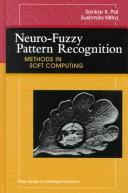
ISBN: 0471348449 Year: 1999 Publisher: New York, NY : Wiley-Interscience,
Abstract | Keywords | Export | Availability | Bookmark
 Loading...
Loading...Choose an application
- Reference Manager
- EndNote
- RefWorks (Direct export to RefWorks)
Soft computing. --- Pattern recognition systems. --- Neural networks (Computer science) --- Fuzzy systems. --- Informatique douce --- Reconnaissance des formes (Informatique) --- Réseaux neuronaux (Informatique) --- Systèmes flous --- Neural networks (Computer science). --- Réseaux neuronaux (Informatique) --- Systèmes flous --- Image processing. --- Traitement d'images. --- Traitement d'images --- Artificial intelligence --- Pattern recognition
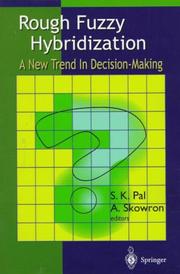
ISBN: 9814021008 9789814021005 Year: 1999 Publisher: Singapore: Springer,
Abstract | Keywords | Export | Availability | Bookmark
 Loading...
Loading...Choose an application
- Reference Manager
- EndNote
- RefWorks (Direct export to RefWorks)
Artificial intelligence --- Fuzzy sets --- Rough sets --- Decision Making --- Uncertainty --- Mathematical models --- Artificial intelligence. --- Decision making --- Fuzzy sets. --- Rough sets. --- Uncertainty. --- Mathematical models. --- Decision Making - Mathematical models
Book
ISBN: 9789813144545 9813144548 Year: 2017 Publisher: Hackensack (N.J.): World scientific,
Abstract | Keywords | Export | Availability | Bookmark
 Loading...
Loading...Choose an application
- Reference Manager
- EndNote
- RefWorks (Direct export to RefWorks)
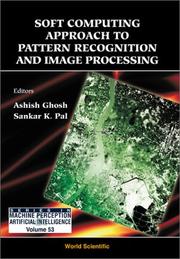
ISBN: 9812382518 Year: 2003 Publisher: River Edge (N.J.) : World scientific,
Abstract | Keywords | Export | Availability | Bookmark
 Loading...
Loading...Choose an application
- Reference Manager
- EndNote
- RefWorks (Direct export to RefWorks)
Image processing. --- Pattern perception. --- Soft computing.
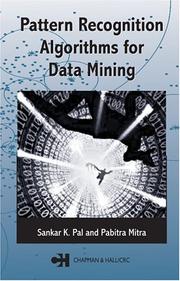
ISBN: 1584884576 9781584884576 Year: 2004 Publisher: Boca Raton, Fla.: Chapman & Hall/CRC,
Abstract | Keywords | Export | Availability | Bookmark
 Loading...
Loading...Choose an application
- Reference Manager
- EndNote
- RefWorks (Direct export to RefWorks)
Pattern Recognition Algorithms for Data Mining addresses pattern recognition (PR) tasks in a unified framework with both theoretical and experimental results. Tasks covered include data condensation, feature selection, case generation, clustering/classification, and rule generation and evaluation. Organized into eight chapters, the book begins by introducing PR, data mining, and knowledge discovery concepts. The authors proceed to analyze the tasks of multi-scale data condensation and dimensionality reduction. Then they explore the problem of learning with support vector machine (SVM), and conclude by highlighting the significance of granular computing for different mining tasks in a soft paradigm.
Computer algorithms. --- Data mining. --- Granular computing. --- Pattern recognition systems. --- Acqui 2006 --- Data mining --- Pattern recognition systems --- Computer algorithms --- Granular computing
Article
Abstract | Keywords | Export | Availability | Bookmark
 Loading...
Loading...Choose an application
- Reference Manager
- EndNote
- RefWorks (Direct export to RefWorks)
Observations on the agonistic behaviour of 12 free-ranging dogs from two neighbouring groups were recorded in Katwa town, India. Both intra- and inter-group agonistic encounters were recorded on a seasonal basis. Mean (+/- S.E.) seasonal number of intra-group agonistic encounters of individual dog was greatest in winter (13.33 +/- 1.89) and then in late monsoon (12.33 +/- 1.99), when the females were lactating and in oestrus, respectively. Similarly, the mean (+/-S.E.) seasonal number of inter-group agonistic encounters of individual dog was greatest in winter (32.25 +/- 4.43) and then in late monsoon (27.75 +/- 2.01). There was a significant difference between the intra- and inter-group agonistic encounters. Dominance hierarchies were established among the adult dogs of either sex based on aggressive encounters. Although individual differences in agonism were observed, overall levels of aggression were higher among the adult females than for other groups. In contrast, overall levels of submission were higher among the juvenile males than for other groups. The results from this study suggest that reproductive season, sex and age have a significant effect on the agonistic behaviour of free-ranging dogs. (C) 1998 Elsevier Science B.V. All rights reserved
Adult. --- Age. --- Aggression. --- Aggressive. --- Agonistic behaviour. --- Agonistic. --- Behaviour. --- Canis-familiaris. --- Canis. --- Dispersal. --- Dog,agonistic behaviour,aggression,submission,courting,seasonal dynamics,sex influence,age influence. --- Dog. --- Dogs. --- Dominance hierarchies. --- Dominance. --- Female. --- Females. --- Group. --- Hierarchy. --- Individual difference. --- Individual differences. --- Individual-differences. --- Level. --- Male. --- Males. --- Observation. --- Oestrus. --- Population. --- Red foxes. --- Season. --- Sex. --- Sexes. --- Social-organization. --- Submission. --- Territory maintenance. --- Urban dogs. --- Wolves.
Book
ISBN: 0780304225 9780780304222 Year: 1992 Publisher: New York (N.Y.) : IEEE,
Abstract | Keywords | Export | Availability | Bookmark
 Loading...
Loading...Choose an application
- Reference Manager
- EndNote
- RefWorks (Direct export to RefWorks)
Artificial intelligence. Robotics. Simulation. Graphics --- Pattern perception. --- Fuzzy sets --- Cluster analysis --- Cluster analysis. --- Fuzzy sets.
Book
ISBN: 9783642022821 Year: 2009 Publisher: Berlin Heidelberg Springer Berlin Heidelberg
Abstract | Keywords | Export | Availability | Bookmark
 Loading...
Loading...Choose an application
- Reference Manager
- EndNote
- RefWorks (Direct export to RefWorks)
The 8th International Workshop on Fuzzy Logic and Applications (WILF 2009) held in Palermo (Italy), June 9-12, 2009, covered topics related to theoretical and experimental areas of fuzzy sets and systems with emphasis on di?erent applications. This eventrepresentsthe continuation ofan established traditionof biannual interdisciplinary meetings. The previous editions of WILF were held, with an increasing number of participants, in Naples (1995), Bari (1997), Genoa (1999), Milan (2001), Naples (2003), Crema (2005) and Camogli (2007). Each event focused on distinct main thematic areas of fuzzy logic and related applications. WILF 2009 aimed to highlight connections and synergiesof fuzzy sets theory with nonconventional computing (e.g., neural networks, evolutionary compu- tion, support vector machines, molecular computing, quantum computing) and cognitivescience,inordertoreachabetterunderstandingofbothnaturaland- ti?cial complex systems as well as computing systems, inspired by nature, which are able to solve complex problems. From this perspective one of the main goals of the WILF workshops is to bring together researchers and developers from both academia and high-tech companies. WILF 2009receivedmorethan 60 paper submissionsfrom all overthe world, including Algeria, Belgium, Benin, Brazil, Canada, China, France, Greece, India, Iran, Italy, Japan, Poland, Romania, Slovakia, Spain and the USA. A rigorous peer-review selection process was applied to ultimately select nearly 40 high-quality manuscripts to be published in this volume. Moreover,thevolumealsoincludespresentationsfromthreekeynotespeakers EtienneKerre(GhentUniversity,Belgium),SankarK.Pal(ISI,India)andEnric Trillas (ECSC, Spain).
Mathematical logic --- Mathematical statistics --- Information systems --- Artificial intelligence. Robotics. Simulation. Graphics --- Computer. Automation --- patroonherkenning --- beeldverwerking --- IR (information retrieval) --- factoranalyse --- informatica --- wiskunde --- KI (kunstmatige intelligentie) --- logica --- robots
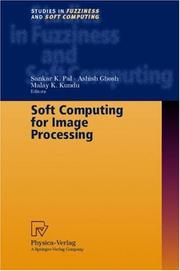
ISBN: 3790812684 Year: 2000 Publisher: New York (N.Y.) : Physica-Verlag,
Abstract | Keywords | Export | Availability | Bookmark
 Loading...
Loading...Choose an application
- Reference Manager
- EndNote
- RefWorks (Direct export to RefWorks)
Image processing --- Soft computing. --- Digital techniques.
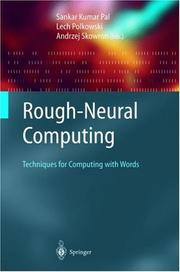
ISBN: 3540430598 Year: 2004 Publisher: Berlin : Springer,
Abstract | Keywords | Export | Availability | Bookmark
 Loading...
Loading...Choose an application
- Reference Manager
- EndNote
- RefWorks (Direct export to RefWorks)
Soft computing comprises various paradigms dedicated to approximately solving real-world problems, e.g., in decision making, classification or learning; among these paradigms are fuzzy sets, rough sets, neural networks, and genetic algorithms. It is well understood now in the soft computing community that hybrid approaches combining various paradigms provide very promising attempts to solving complex problems. Exploiting the potential and strength of both neural networks and rough sets, this book is devoted to rough-neurocomputing which is also related to the novel aspect of computing based on information granulation, in particular to computing with words. It provides foundational and methodological issues as well as applications in various fields.
Natural language processing (Computer science). --- Neural computers. --- Rough sets. --- Soft computing.
| Listing 1 - 10 of 20 | << page >> |
Sort by
|

 Search
Search Feedback
Feedback About UniCat
About UniCat  Help
Help News
News